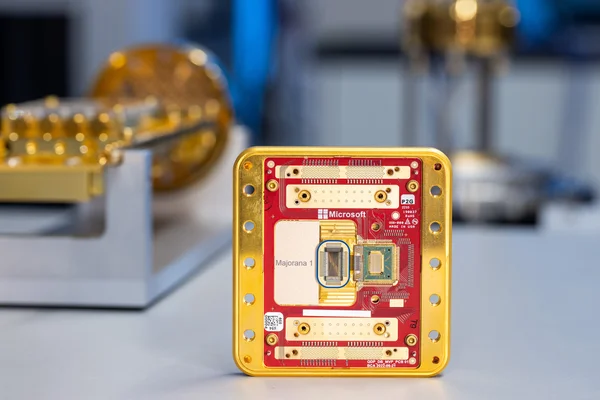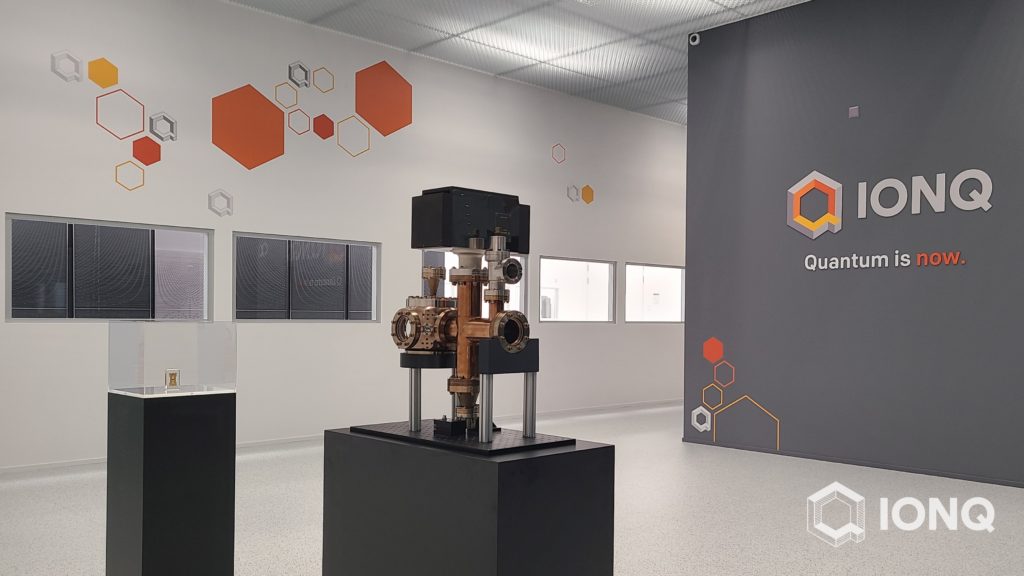Before February 19, 2025, the name Majorana was largely unknown outside the physics community. That day, Microsoft announced a groundbreaking achievement: the creation of the first chip powered by topological qubits.
These qubits, the company claimed, are built around elusive particles called Majorana fermions, named after Italian physicist Ettore Majorana. This announcement sent ripples throughout the tech world, raising hopes and sparking renewed interest in the potential of quantum computing.
Quantum computers rely on qubits, which encode the 0s and 1s of information. But also leverage the unique properties of atoms and other microscopic particles to tackle complex mathematical problems that traditional computers struggle with, or to solve them significantly faster.
Microsoft’s topological qubit approach is just one of several methods being pursued by companies and academia to build these machines of the future.
Quantum Computing for Business: Achieving Quantum Advantage
Quantum computers are expected to excel at tasks requiring sifting through a multitude of possibilities to find the optimal solution.
Imagine an airline calculating the most efficient route between Sydney and New York, optimizing for both fuel consumption and flight duration.
A quantum computer could rapidly analyze countless scenarios and pinpoint the best option. Similarly, a pharmaceutical company could leverage quantum computing to design new molecules by positioning atoms precisely during drug development.
From discovering new materials to making better predictions about financial market fluctuations, and from enhanced manufacturing to revolutionary design. Quantum computers hold the potential to unlock countless opportunities for businesses worldwide. This potential is further amplified by the synergy between quantum computing and artificial intelligence (AI).
Majorana Fermions: Microsoft’s Quantum Leap and the Future of Business
Several tech giants, including Google, IBM, Microsoft, Quantinuum, IonQ, and PsiQuantum, along with university labs around the globe, have made remarkable strides in quantum hardware, software, and algorithms over the past decade.
If Microsoft’s Majorana announcement proves to be the breakthrough the company claims, it could significantly accelerate the timeline for developing fully functional quantum computers. Researchers believe Majorana-based devices could be easier to scale and less prone to errors than other technologies.
While some researchers remain skeptical about certain aspects of Microsoft’s Majorana news, stocks of quantum computing companies rallied in the days following the announcement. More broadly, the term Majorana fermions has entered the lexicon of conferences and events even remotely related to quantum discussions. Even mainstream media outlets have been covering recent efforts to push the boundaries of this emerging technology.
Quantum computers won’t replace traditional computers, but they could outperform them in specific tasks. They are particularly promising for applications in medicine, chemistry, materials science, finance, and manufacturing.
It’s no surprise that governments, academia, and private companies have been investing heavily in this technology and cultivating the talent needed to build large-scale quantum computers.
However, continued investment and support are crucial. While awareness of quantum computing appears to be growing globally, a deeper understanding of the technology’s current state and its proximity to “quantum advantage” – the point at which a quantum computer can solve a real-world problem that a classical computer cannot – is essential. This understanding will be key to unlocking the full potential of this transformative technology.

Quantum Computing: A Race Across Superconductivity, Ions, and Light
While work on quantum information theory began in the 1960s, the possibility of building quantum computers was first discussed two decades later.
In 1980, American physicist Paul Benioff and Russian mathematician Yuri Manin, working independently, mathematically described the possibility of creating a machine leveraging the laws of quantum mechanics.
In 1982, American physicist Richard Feynman took the discussion further, arguing in a paper that a quantum computer would be needed to effectively simulate nature’s complexity. This spurred researchers to begin turning theory into practice.
Today, Google, IBM, Rigetti Computing, and others are betting on superconducting qubits. This approach relies on electrical circuits made of superconducting material, where, at a certain critical temperature, resistivity drops almost to zero, dramatically increasing conductivity.
At its Quantum Developer Conference in November 2024, IBM unveiled the second generation of its Heron chip, boasting 156 qubits and already being used by clients globally. According to IBM’s quantum roadmap, the company plans to develop a fully functional, fault-tolerant quantum computer by 2029. It is taking concrete steps in this direction by working on error suppression and scaling the technology.
Quantum Computing’s “Quantum Advantage”: Real-World Business Applications
In a recent IBM paper, researchers described how a quantum computer outperformed a classical machine in certain niche applications, demonstrating what IBM calls quantum utility, or quantum computers performing scientifically useful work beyond brute-force classical computing.
The latter is a problem-solving method in classical computing that involves trying every possible solution until the right answer is found, in contrast to a quantum approach which can try many solutions at once.
Meanwhile, Google generated significant excitement last year with a paper describing how its scientists achieved very low error rates on its Willow quantum chip. The paper has been hailed as a significant step by many researchers worldwide, and rightfully so. Error correction is a major industry-wide effort, with many companies and academic experts working diligently to create qubits that produce error-free results, also known as achieving high fidelity.
These efforts appear to be bearing fruit. The quality of qubits, as reported by various industry and academic players, is steadily improving. Amazon Web Services’ (AWS) Ocelot, for instance, launched in 2025, has error-correction capabilities built-in from the start, according to the company. The chip is based on the cat qubit, named after the famous Schrödinger’s cat thought experiment, where certain types of errors are intrinsically suppressed to make it easier to correct any remaining errors that might arise.
Other approaches to quantum computing also exist. Companies like Quantinuum and IonQ are trapping ions with lasers to create qubits and have been achieving high-fidelity results. However, trapped-ion operations are slower than those performed with superconducting qubits, so these companies —like Quantinuum and IonQ— are also working to improve speed.

Is the World Ready for the Quantum Leap? Bridging the Gap Between Hype and Understanding
While general awareness of quantum computing is on the rise, most businesses remain largely unaware of the potential benefits it could bring to various industries. Therefore, as we build the technology, we must also focus on building a quantum-ready economy.
This requires investment, both public and private, to fuel continued research in industry labs, academia, and through public-private partnerships. According to research by Accenture, global hyperscalers (providers of vast amounts of computing power and storage) are leading the investment charge in quantum computing. They see this emerging technology as the next frontier in cloud computing and aim to be at the forefront of the quantum-driven global transformation.
But investment alone is not enough. We must also cultivate a deeper understanding of quantum computing’s potential. This starts with education. Raising awareness from primary school, solidifying that understanding in secondary and higher education, and continuing with targeted workplace training is crucial.
This is how we nurture the quantum talent of the future – not just programmers, but future CEOs across diverse industries. If they can grasp the potential of this technology for business, the world will reap the rewards of quantum advantage.
Why Businesses Need to Pay Attention to Quantum Computing
Quantum computing is poised to revolutionize industries by tackling problems currently intractable for classical computers. This includes:
Drug Discovery and Development: Simulating molecular interactions to accelerate the creation of new drugs and therapies.
Materials Science: Designing new materials with enhanced properties for various applications, from energy storage to construction.
Financial Modeling: Developing more accurate and sophisticated models for risk management, portfolio optimization, and fraud detection.
Supply Chain Optimization: Solving complex logistical challenges to improve efficiency and reduce costs.
Artificial Intelligence: Enhancing machine learning algorithms to unlock new levels of performance and insights.
The Quantum-Ready Workforce
Developing a quantum-ready workforce is essential for realizing the full potential of this technology. This requires a multi-pronged approach:
Educational Initiatives: Integrating quantum computing concepts into school curricula at all levels.
Upskilling and Reskilling Programs: Providing opportunities for current professionals to acquire quantum computing skills.
Industry-Academia Collaboration: Fostering partnerships between universities and businesses to develop tailored training programs.
The Path Forward
The journey towards a quantum-ready world requires a concerted effort from governments, businesses, and educational institutions. By investing in research, fostering talent, and raising awareness, we can pave the way for a future where quantum computing drives innovation and economic growth.
The time to prepare for the quantum leap is now!

